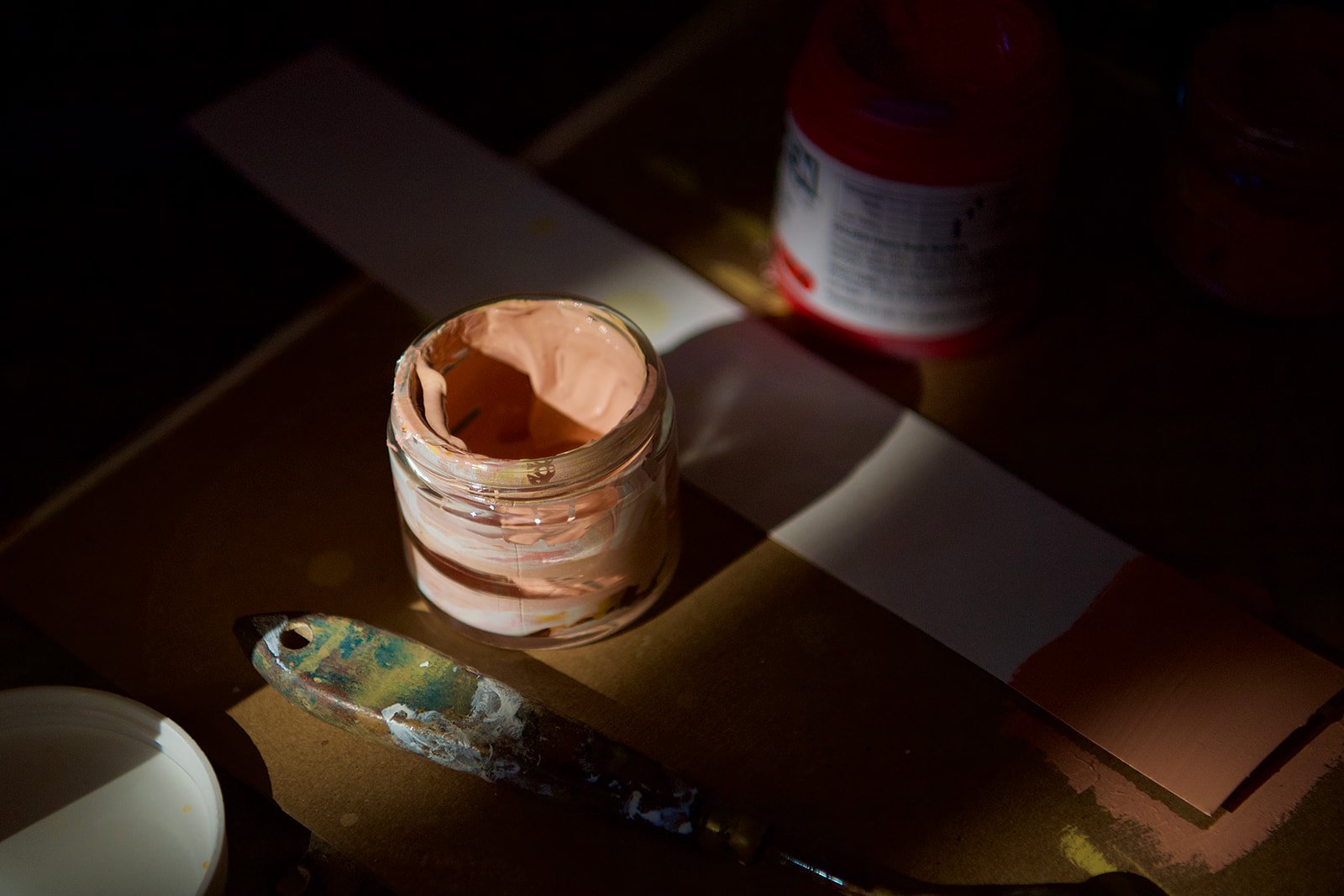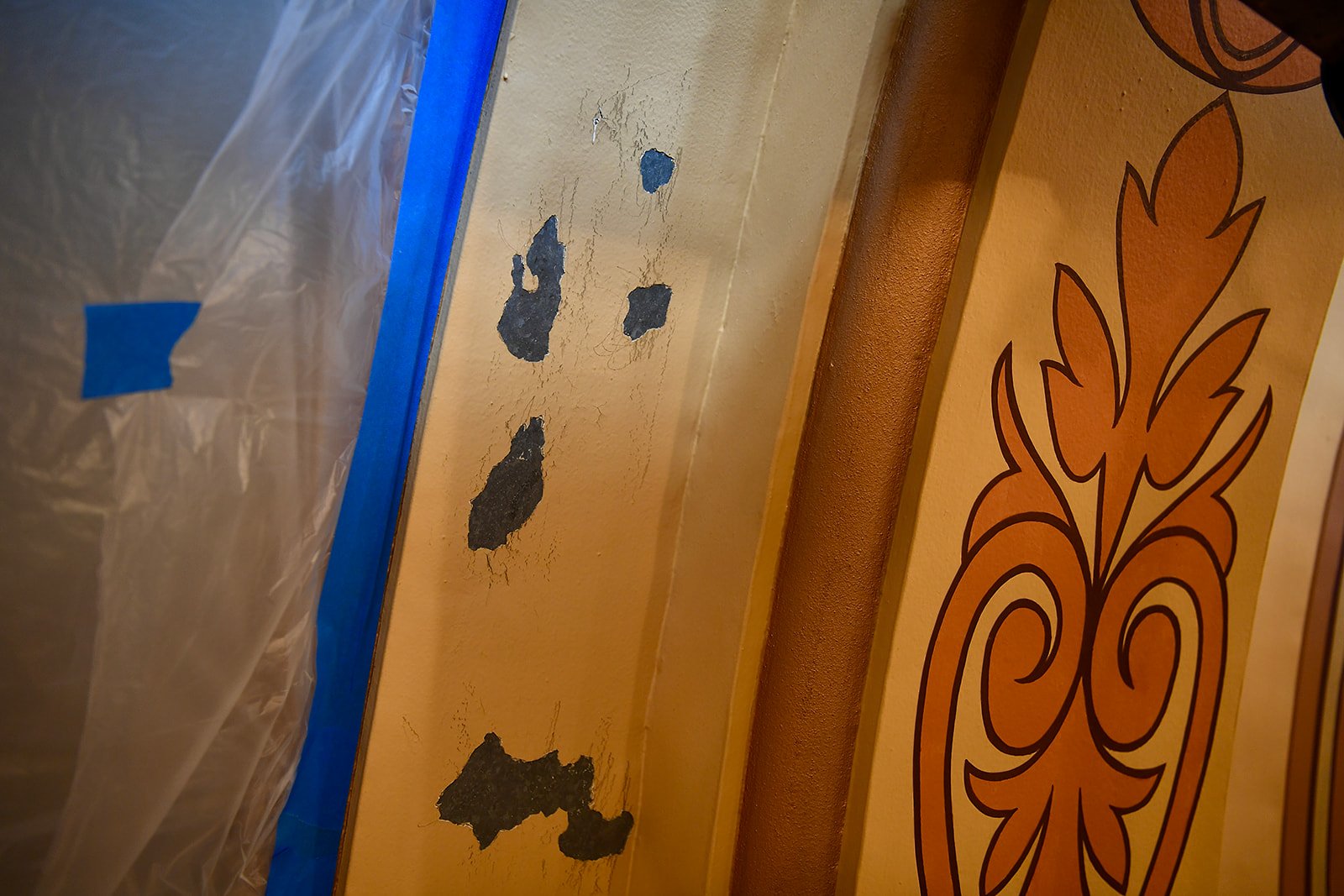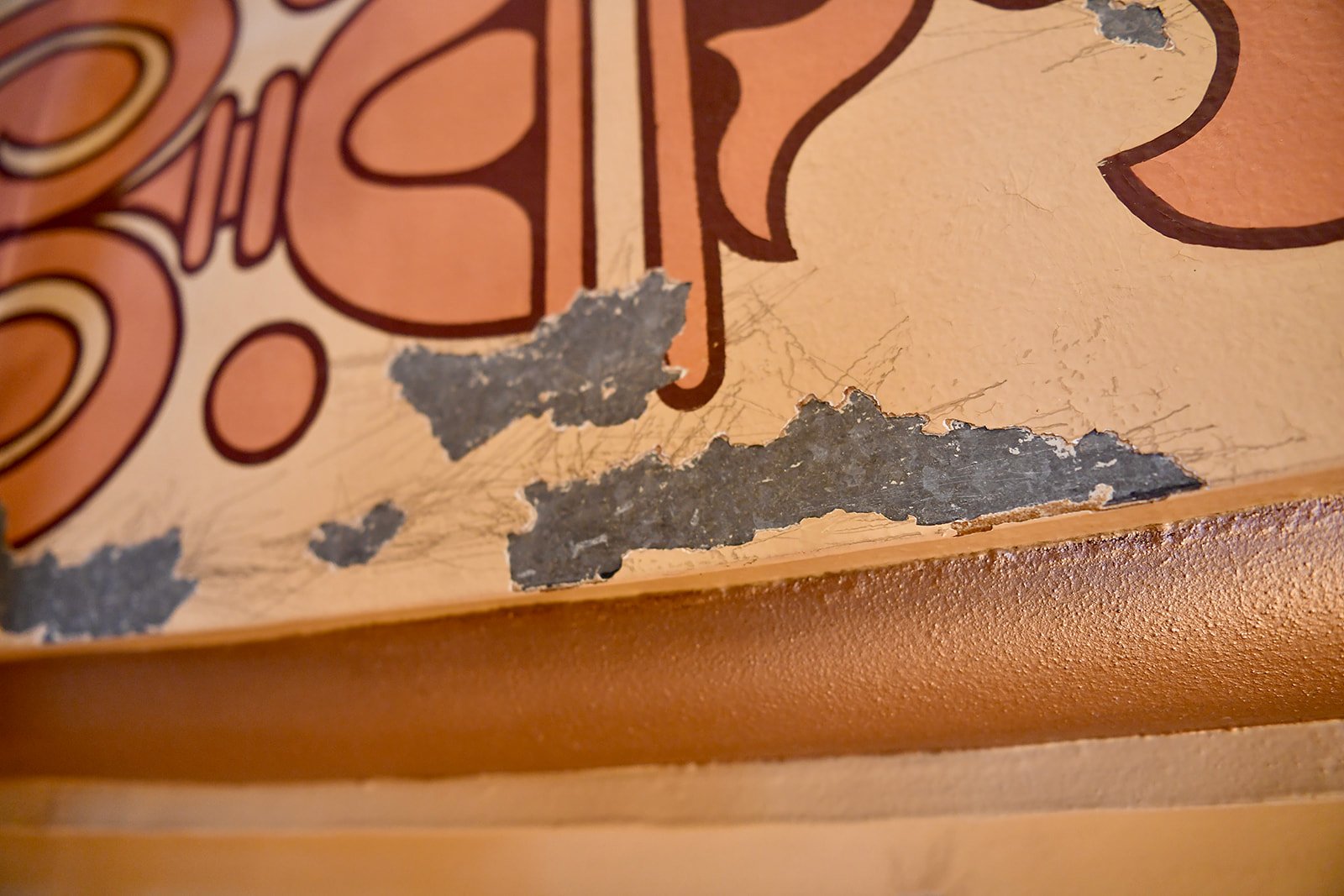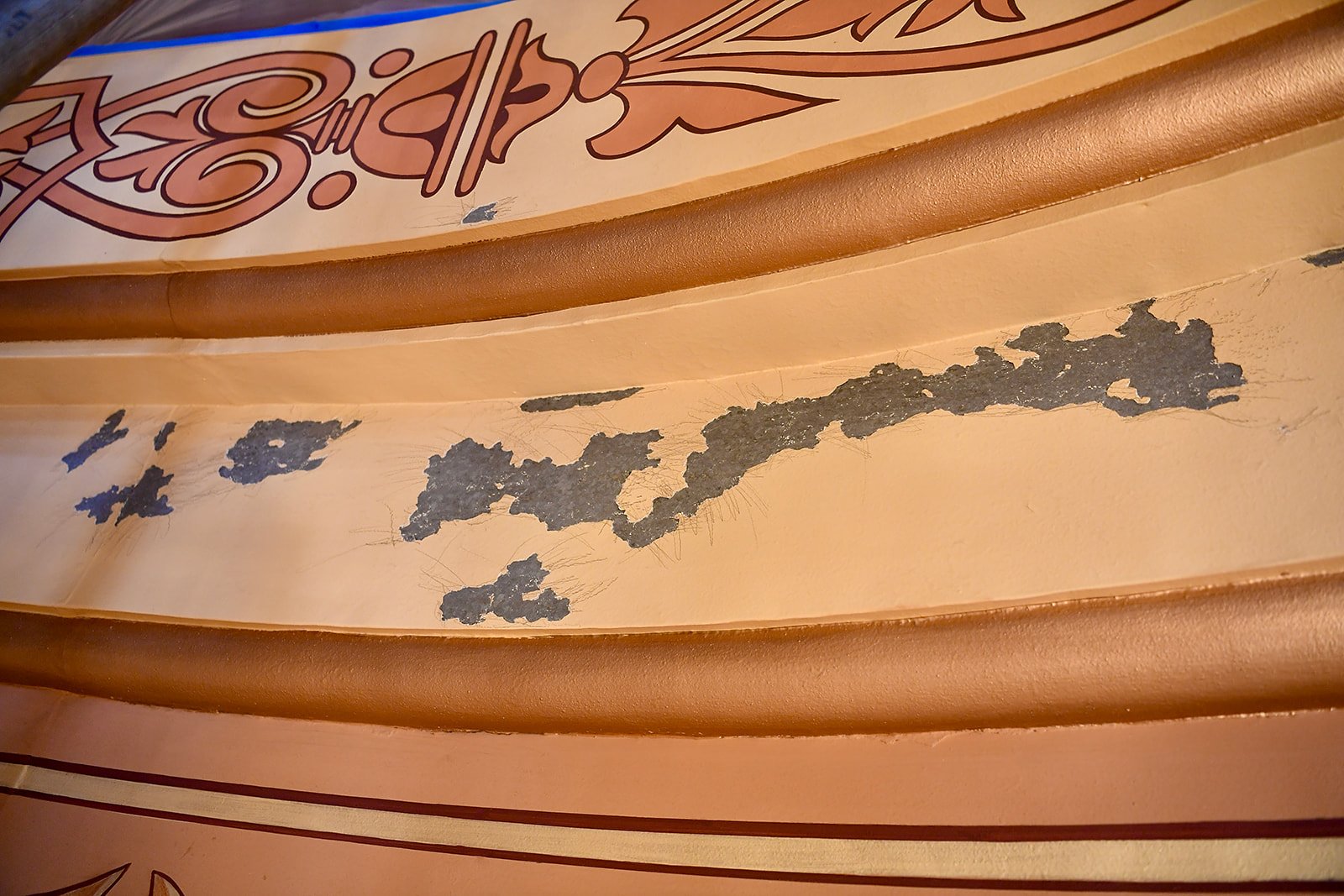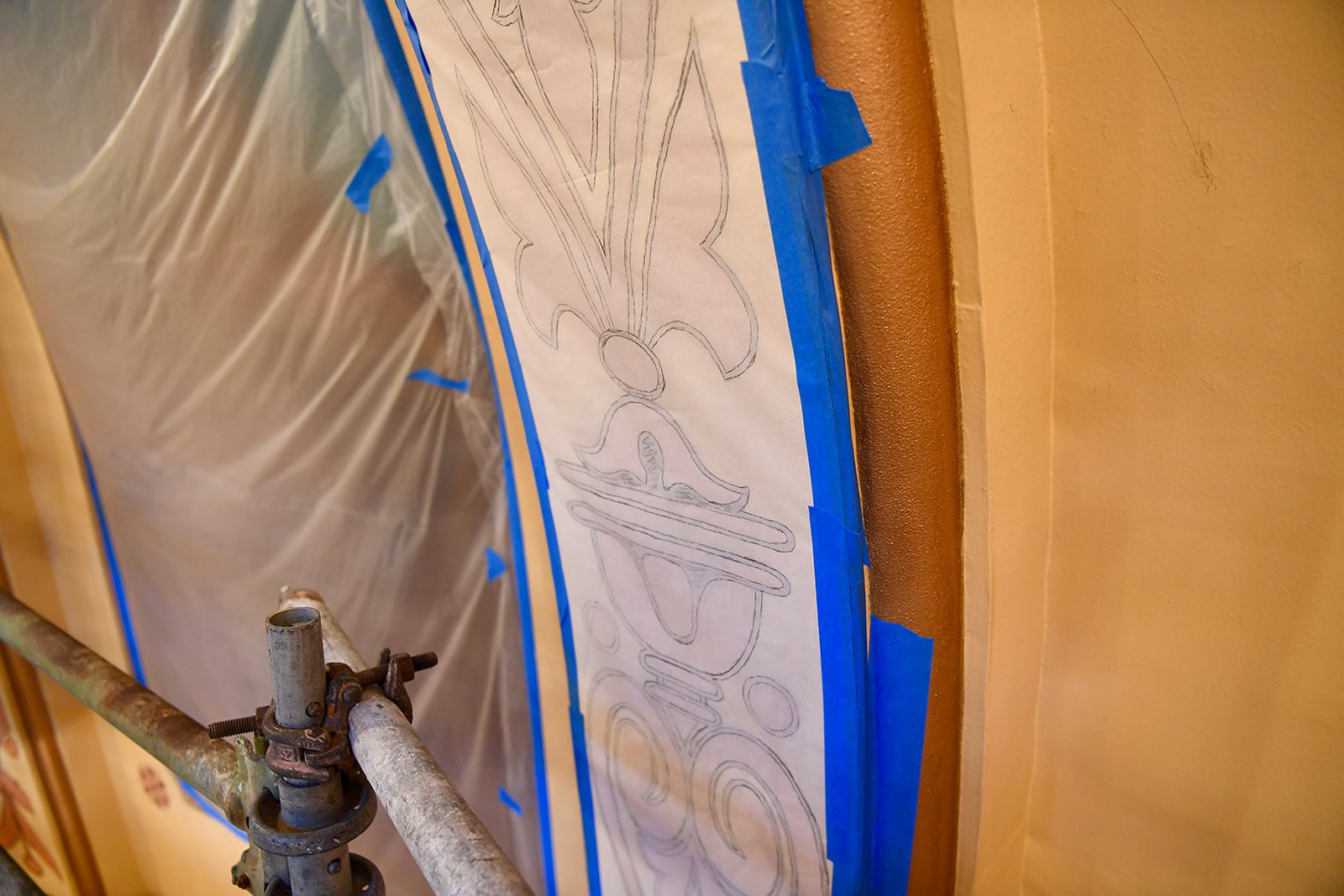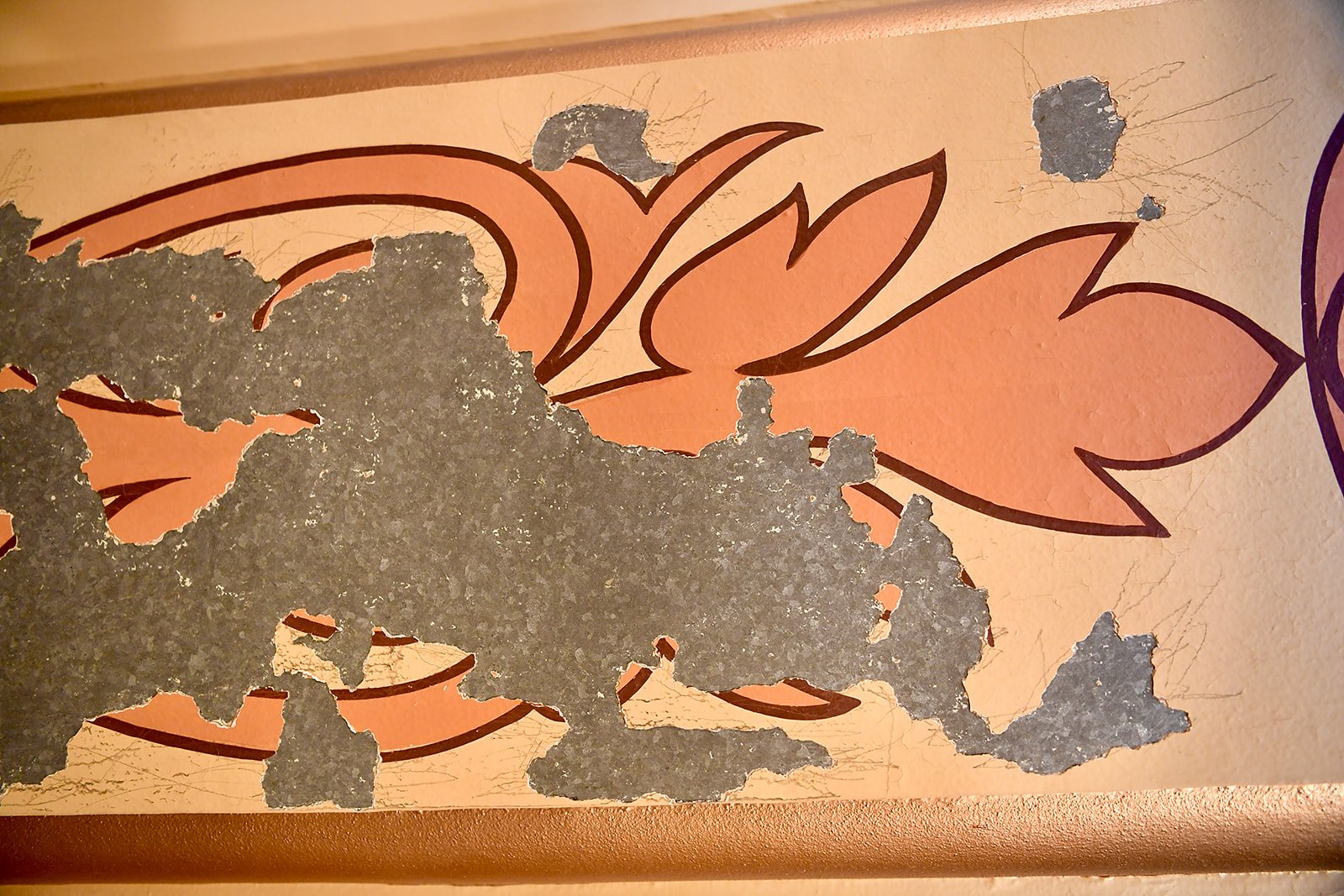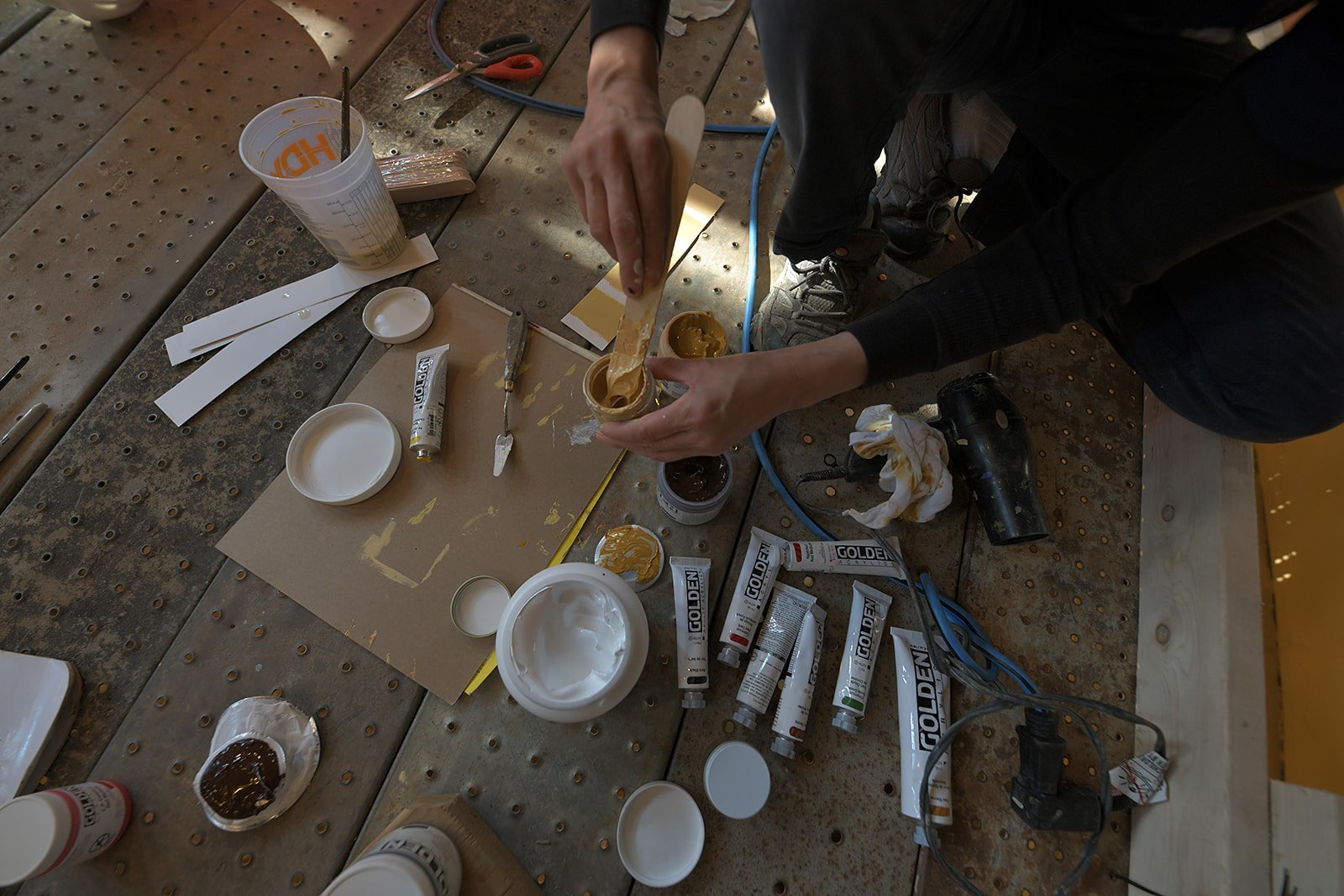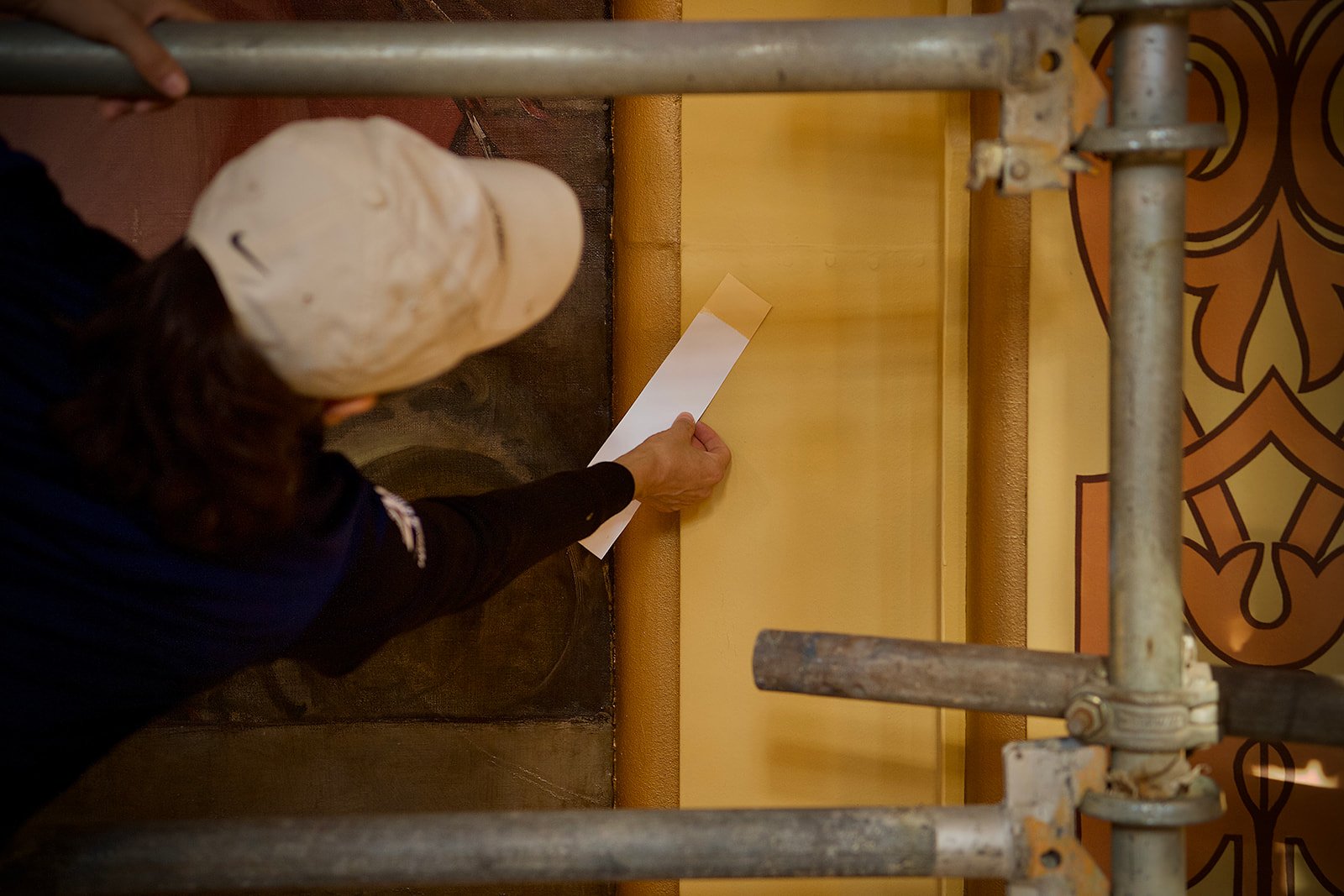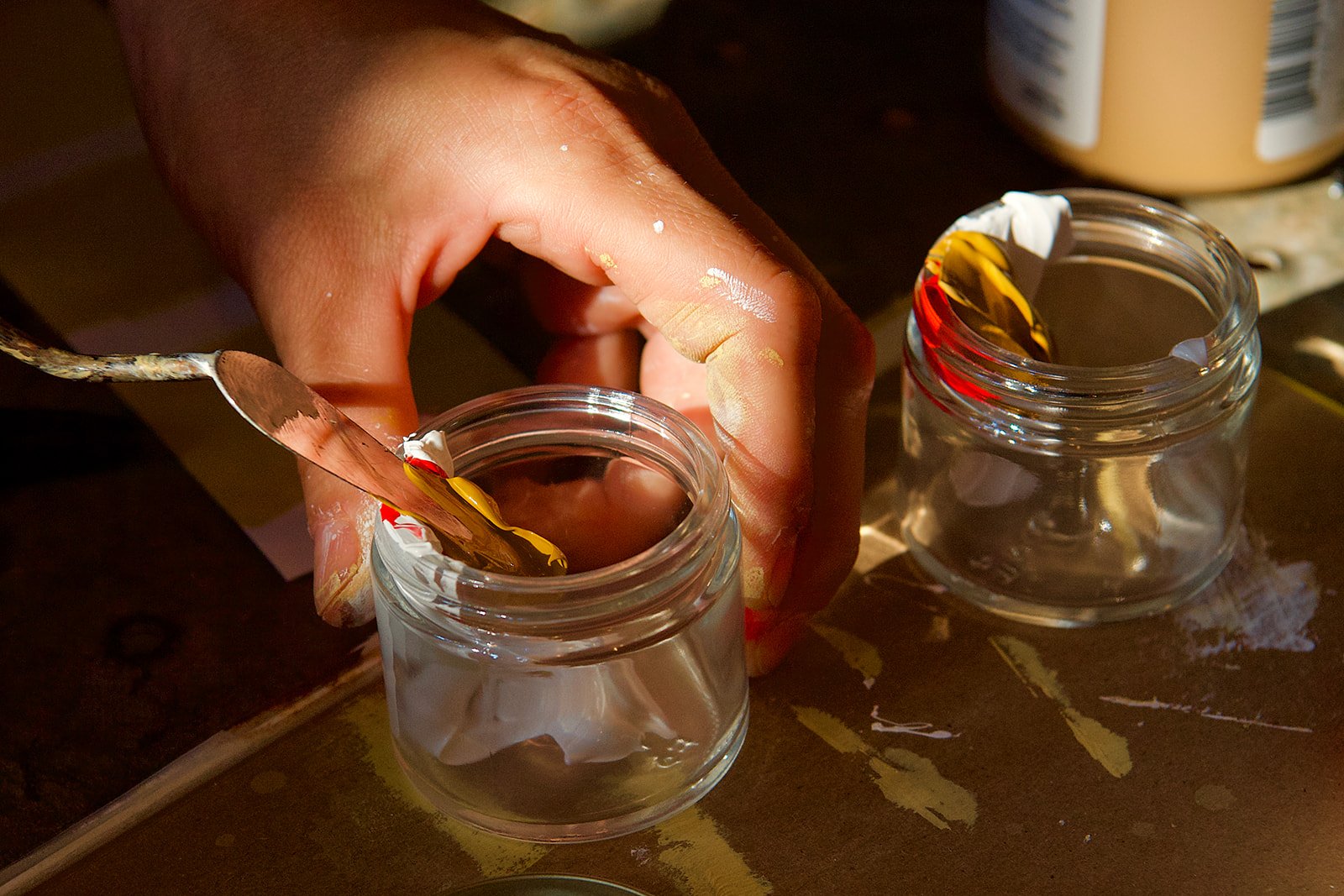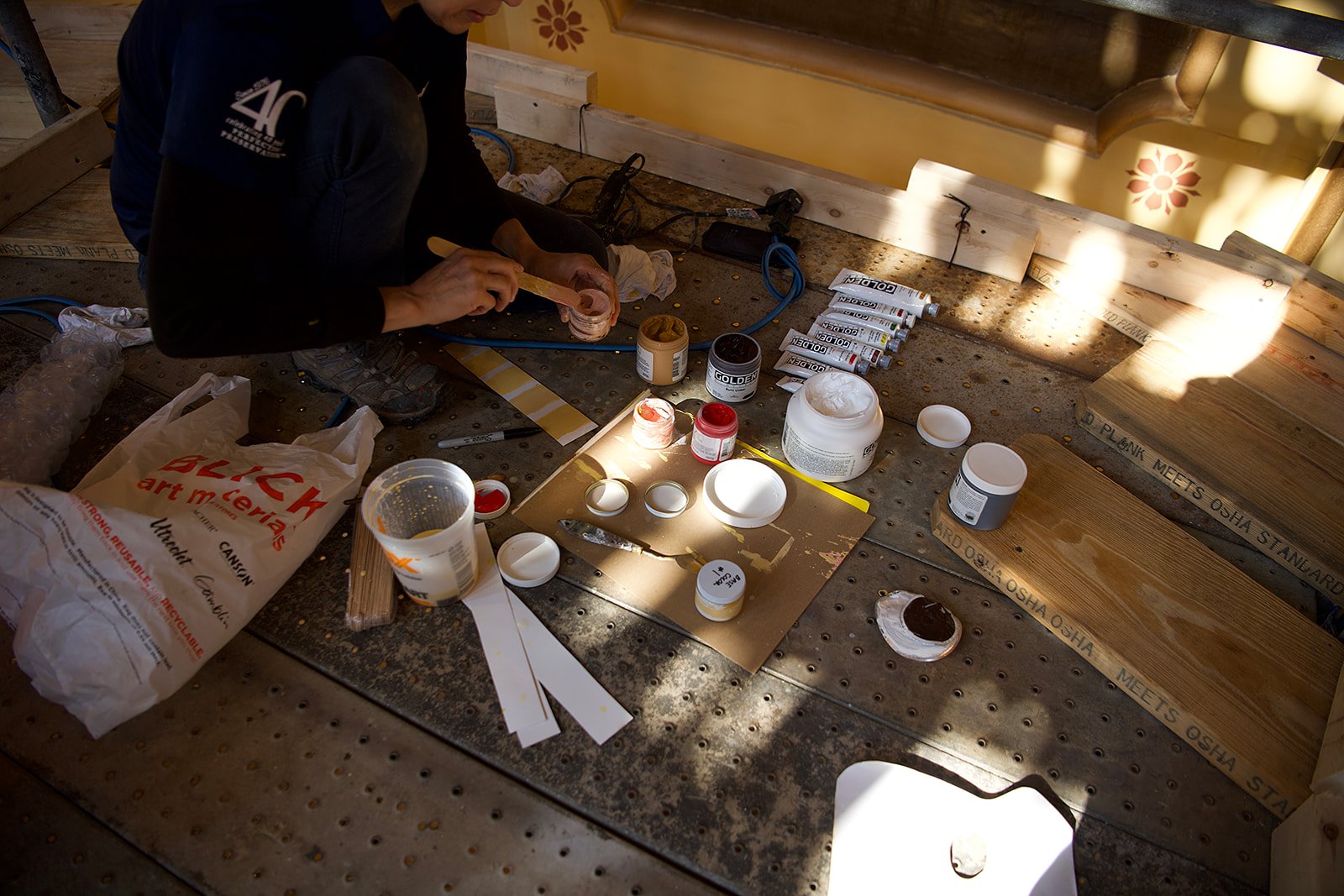Rotunda Art Conservation: Color Matching, Scraping, and Stenciling
While many modern Americans might imagine the 19th century in sober black and white, anyone who’s visited the Michigan Capitol quickly realized that Victorians loved color! The decorative art on the walls and ceilings display an astounding array of shades and patterns that sometimes surprise our visitors. The intricacy of the Capitol’s artwork makes it incredibly beautiful, but also makes it difficult to replicate. Decorative painters with the John Canning Company are now starting this challenging work on top of the rotunda scaffolding.
After cleaning the surfaces of the inner dome, they started to mix paints to match the colors of the existing artwork. Color matching in the dome is no easy task, as fluctuating light levels can change the look of the paint dramatically, and sun exposure has faded the colors used in the 1987-1992 restoration. An experienced painter can match a color by eye. They start by using a fan deck of color options to find a similar shade, then mix a paint sample, adding whatever pigments are needed till they achieve a perfect match. The painters working in the dome today are using acrylics which are made of water, pigments, and a polymer binder.
Once they have the paint colors they need, they can start the repair process. There are many areas inside the dome where the paint applied during the restoration has “bubbled” and become detached from the walls. The loose paint is carefully scraped off while leaving the surrounding art intact. Many Capitol visitors and staff would be surprised to see metal peeking out behind the missing paint. Underneath all that gorgeous artwork, the dome is made of iron and sheet metal! These were very popular and affordable building materials in the 1870’s.
With the damaged areas removed, the elegant painted patterns and motifs are interrupted by splotches of exposed metal. Decorative painters then use stencils to fill in these gaps, replicating the original design. Tracings of the intact designs are done on thin paper, then laser cut into a thick plastic sheeting called Mylar. Any particularly large motifs are broken down into multiple stencils to make them easier to use. When the Capitol was originally decorated, stencils were cut by hand and extremely laborious.
The steps of color matching, scraping, and stenciling seem relatively straightforward, but keep in mind, this process is repeated on about 140,000 square feet of the dome! As they continue their work atop the scaffolding, repairing our Capitol’s riot of color, We will return here with more updates on the project and insights into the fascinating techniques of decorative art restoration.

